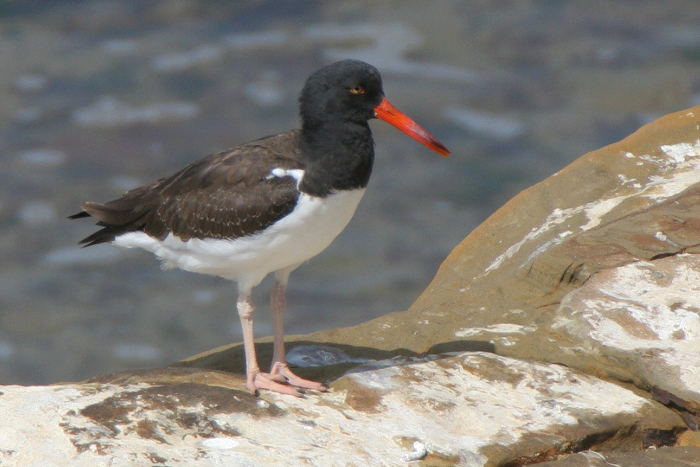
Location: Point Loma, CA
Date: 2006-09-30
Lens: Canon 600mm IS F4 + 1.4x II Converter

 American Oystercatcher
Haematopus palliatus
American Oystercatcher
Haematopus palliatus
 Description
DescriptionThere are two races of the American Oystercatcher in North America: the eastern race and the pacific race. The pacific race generally stays south of San Diego. As its name implies, the oystercatcher feeds on oysters, clams, marine crustaceans, and invertebrates. The bird uses its strong bill to pry open its meal. Once open, the bird quickly severes the bivalves muscle that keeps the shell closed.
Adult: Black head and breast. Dark brownish-black back and wings. White belly and underparts. Yellow eye with orange orbital ring. Long, thick, bright orange bill. Large, white wing patch. Dark tail with white rump. Pale-pink legs. Sexes similar. 16 to 17 inches in length.
Juvenile: Similar to adult, but has dark eye with inconspicuous orbital ring, darker and duller bill, and the underparts have faint buff feather edges.
Rocky, sandy or shell beaches, salt marshes and mudflats.
 Nesting
Nesting2-4 buff-colored eggs with light and dark markings. The eggs have a 24-29 day incubation period. Fledging occurs at 35+ days. The nest is a shallow ground depression above the high tide line on a sandy or rocky beach. The nest is disguised with broken shells and pebbles. Both parents incubate the eggs. It takes approximately 60 days for the chicks bill to become strong enough to pry open bivalves on its own.